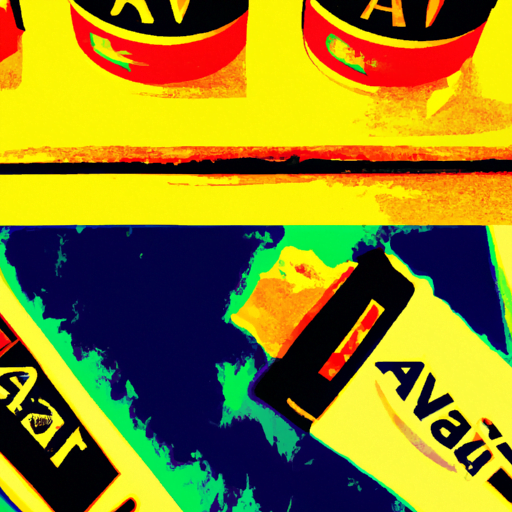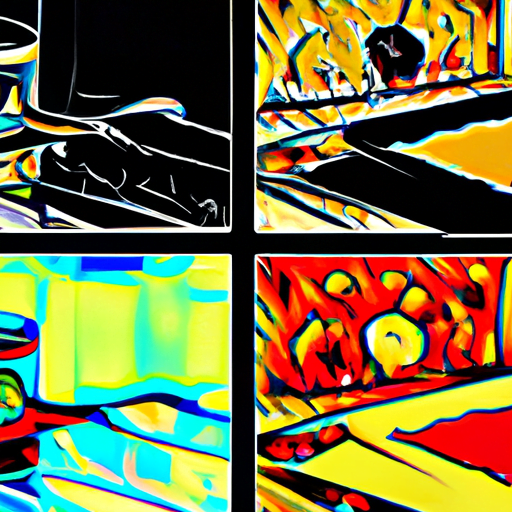
-
Table of Contents
AI-Enhanced Brush Techniques: Pushing Boundaries in Digital Art

Artificial Intelligence (AI) has revolutionized various industries, and the world of digital art is no exception. With the advent of AI-enhanced brush techniques, artists now have access to powerful tools that push the boundaries of creativity and enable them to create stunning and unique artworks. In this article, we will explore the impact of AI on digital art and delve into the various ways in which AI-enhanced brush techniques are transforming the art world.
The Rise of AI in Digital Art
AI has made significant advancements in recent years, and its integration into the field of digital art has opened up new possibilities for artists. By leveraging machine learning algorithms, AI can analyze vast amounts of data and learn patterns, enabling it to generate realistic and imaginative brush strokes that mimic traditional art techniques.
One notable example of AI in digital art is the DeepArt algorithm developed by Leon Gatys et al. This algorithm uses a deep neural network to analyze the style of a reference image and apply it to a target image. The result is a unique artwork that combines the content of the target image with the style of the reference image. This technique, known as style transfer, has gained popularity among digital artists and has been used to create mesmerizing and visually striking artworks.
Enhancing Creativity with AI-Enhanced Brush Techniques
AI-enhanced brush techniques offer artists a range of tools and features that enhance their creativity and enable them to explore new artistic possibilities. These techniques can be used to generate brush strokes, textures, and patterns that would be challenging to create manually.
One example of AI-enhanced brush techniques is the use of generative adversarial networks (GANs) to create realistic textures. GANs consist of two neural networks: a generator network that creates new samples, and a discriminator network that distinguishes between real and generated samples. By training these networks on a large dataset of textures, AI can generate high-quality textures that can be used in digital art.
Another application of AI-enhanced brush techniques is the generation of brush strokes that mimic the style of famous artists. By training AI models on the works of renowned painters, such as Van Gogh or Monet, artists can create artworks that emulate the brushwork and style of these masters. This allows artists to experiment with different artistic styles and expand their creative horizons.
Case Studies: AI in Digital Art
Several artists and organizations have embraced AI-enhanced brush techniques and have produced remarkable artworks that showcase the potential of this technology. Let’s explore a few case studies:
1. Obvious Art
Obvious Art, a Paris-based collective, used AI to create a portrait titled “Portrait of Edmond de Belamy.” The artwork was generated using a GAN trained on a dataset of historical portraits. In 2018, this AI-generated artwork was sold at an auction for $432,500, highlighting the growing recognition and value of AI-generated art.
2. Google’s DeepDream
Google’s DeepDream project uses AI to generate dream-like images by enhancing and modifying existing images. By applying AI algorithms to analyze and manipulate the pixels of an image, DeepDream creates surreal and visually captivating artworks. This project has gained popularity among digital artists and has inspired many to experiment with AI-enhanced brush techniques.
3. NVIDIA’s GauGAN
NVIDIA’s GauGAN is a powerful AI tool that allows artists to create photorealistic landscapes using simple brush strokes. By selecting different brush types and colors, artists can generate realistic terrains, skies, and water bodies. GauGAN leverages AI to understand the artist’s intent and translates their brush strokes into detailed and visually stunning landscapes.
The Future of AI-Enhanced Brush Techniques
The integration of AI-enhanced brush techniques in digital art is still in its early stages, but the potential for growth and innovation is immense. As AI algorithms continue to improve and become more accessible, artists will have even more powerful tools at their disposal.
Here are some potential future developments in AI-enhanced brush techniques:
- Real-time collaboration: AI could enable artists to collaborate in real-time, allowing them to work together on a single artwork or share brush techniques and styles.
- Enhanced customization: AI could learn an artist’s style and preferences, allowing it to suggest brush strokes and techniques that align with the artist’s unique artistic vision.
- Augmented reality integration: AI-enhanced brush techniques could be integrated into augmented reality (AR) applications, allowing artists to create immersive and interactive digital artworks.
Summary
AI-enhanced brush techniques have revolutionized the world of digital art, pushing the boundaries of creativity and enabling artists to create stunning and unique artworks. By leveraging machine learning algorithms, AI can generate brush strokes, textures, and patterns that mimic traditional art techniques. Case studies such as Obvious Art, Google’s DeepDream, and NVIDIA’s GauGAN demonstrate the potential of AI in digital art. As AI continues to advance, the future of AI-enhanced brush techniques holds exciting possibilities, including real-time collaboration, enhanced customization, and integration with augmented reality.
